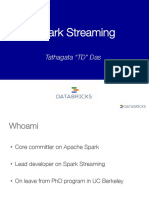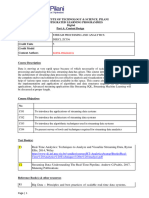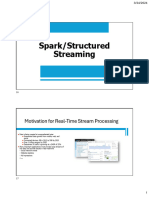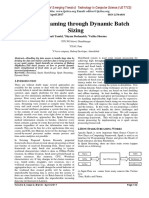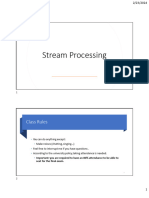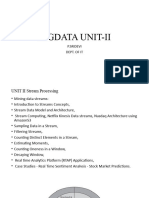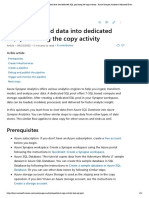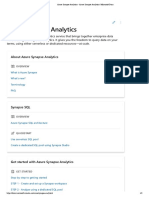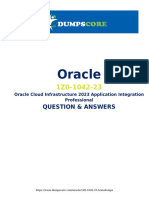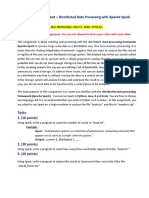0% found this document useful (0 votes)
28 views78 pagesKafka
This document provides an overview of streaming analysis using Spark. It discusses the requirements for streaming frameworks including scalability, low latency processing, and an integrated programming model for both streaming and batch processing. Traditional streaming systems have challenges with stateful processing since node failures can cause state to be lost. Spark Streaming addresses these issues by providing fault-tolerant stateful processing using its resilient distributed datasets (RDDs).
Uploaded by
aryandeo2011Copyright
© © All Rights Reserved
We take content rights seriously. If you suspect this is your content, claim it here.
Available Formats
Download as PDF, TXT or read online on Scribd
0% found this document useful (0 votes)
28 views78 pagesKafka
This document provides an overview of streaming analysis using Spark. It discusses the requirements for streaming frameworks including scalability, low latency processing, and an integrated programming model for both streaming and batch processing. Traditional streaming systems have challenges with stateful processing since node failures can cause state to be lost. Spark Streaming addresses these issues by providing fault-tolerant stateful processing using its resilient distributed datasets (RDDs).
Uploaded by
aryandeo2011Copyright
© © All Rights Reserved
We take content rights seriously. If you suspect this is your content, claim it here.
Available Formats
Download as PDF, TXT or read online on Scribd
/ 78



